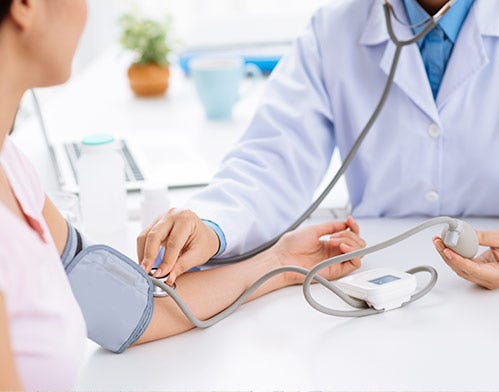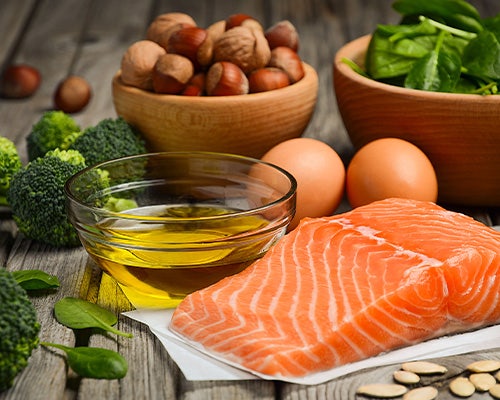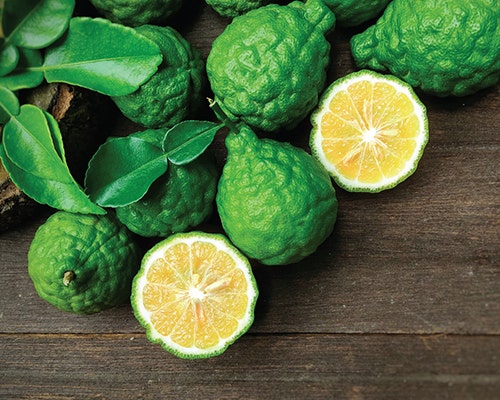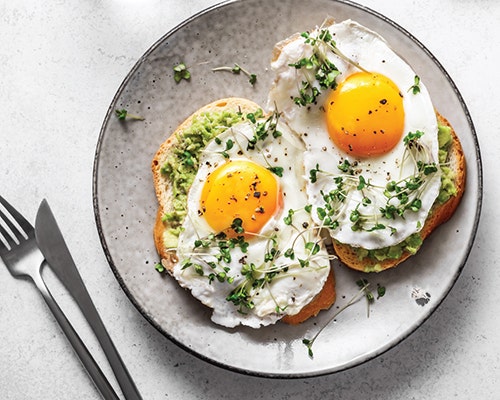High Blood Pressure—Are You at Risk?
- 4/12/17

Most of the body’s vital processes happen without any thought or effort required on our part. Breathing is one example. Blood flow is another. In order to function and survive, the body’s tissues and organs require oxygenated blood, pumped via the circulatory system throughout the body. Part of this circulation process involves blood pressure.
Hypertension, also known as high blood pressure, is when the force of blood pushing against the walls of the arteries and blood vessels is consistently too high, according to the American Heart Association. High blood pressure is a very common health condition, affecting 1 in every 3 American adults, as reported by the CDC. While it can’t always be prevented, there are many actionable ways to help reduce the risk.
Risks of High Blood Pressure
High blood pressure tends to develop gradually over the years, damaging blood vessels and the heart, often without any symptoms. When symptoms are present, they can include headaches, shortness of breath, and chest pain. Unfortunately, they often do not appear until blood pressure has reached a severe stage. This silent progression can be life-threatening, with uncontrolled blood pressure often leading to a stroke or heart attack, according to the Mayo Clinic.
Other risks of high blood pressure include vision loss due to strained or damaged blood vessels in the eyes, peripheral artery disease which can lead to pain or fatigue, sexual dysfunction in both men and women, kidney disease or failure due to inability to properly filter blood, as well as heart failure due to enlargement and inability to adequately supply blood to the body.
The American Heart Association notes that the damage caused to blood vessels as a result of hypertension allows for the accumulation of LDL cholesterol in the artery walls, stressing the circulatory system. This added strain increases the risk of potentially deadly complications.
Causes of High Blood Pressure
WebMD states that there is no identifiable cause for most adults in the case of primary hypertension, which is the progressive type that develops over many years. Most experts attribute its development to causes including:
Secondary hypertension, which results from an underlying condition and appears more suddenly, does have identifiable causes. Some of the most common secondary hypertension causes as reported by the Mayo Clinic include:
What You Can Do
Although there is such a high prevalence, many people are unaware they have high blood pressure until they develop some form of health complication. It is important to note as well that while age increases the risk, children too can suffer from high blood pressure due to kidney or heart problems, as well as poor lifestyle habits such as inactivity and unhealthy diet, says the Mayo Clinic.
Regular monitoring is the best way to ensure blood pressure levels stay consistently within a healthy range, especially if risk factors are present. Normal levels should be less than 120 over 80 mmHg (120 systolic/80 diastolic). It is recommended to check pressure throughout the day, such as morning, midday and evening, as it normally varies at different times.
In some cases, medication may also be required, and your doctor will discuss and recommend how to proceed. Lifestyle changes are usually the first course of action in controlling high blood pressure. Improving diet, exercising regularly, managing stress, losing or maintaining a healthy weight, and quitting smoking are all steps that can help, according to the Mayo Clinic. Relaxation techniques such as meditation and yoga have been found to be beneficial for many people. Specifically, deep breathing has actually been FDA approved as an effective relaxation method of lowering blood pressure.
In several studies, supplementation with coenzyme Q10 reduced blood pressure by up to 17 mmHg over 10 mmHg. Potassium has also been shown to help lower blood pressure, according to Harvard Health. Good sources of potassium-rich produce include sweet potatoes, tomatoes, oranges, potatoes, bananas, peas, cantaloupe, honeydew melon, prunes and raisins.
Switching from coffee to tea can also help lower high blood pressure. A Duke University Medical Center study found that caffeine consumption of 500 mg—about 3 cups of coffee—elevated blood pressure for the entire day by 4 mmHg. A Tufts University study found that participants who drank 3 cups of hibiscus tea daily lowered systolic blood pressure by 7 points in 6 weeks, which is comparable to results of many prescription medications.
Bottom line is, have your blood pressure checked often and consult with your physician on appropriate steps to be taken.
This information is intended for educational and informational purposes only. It should not be used in place of an individual consultation or examination or replace the advice of your health care professional and should not be relied upon to determine diagnosis or course of treatment.
Hypertension, also known as high blood pressure, is when the force of blood pushing against the walls of the arteries and blood vessels is consistently too high, according to the American Heart Association. High blood pressure is a very common health condition, affecting 1 in every 3 American adults, as reported by the CDC. While it can’t always be prevented, there are many actionable ways to help reduce the risk.
Risks of High Blood Pressure
High blood pressure tends to develop gradually over the years, damaging blood vessels and the heart, often without any symptoms. When symptoms are present, they can include headaches, shortness of breath, and chest pain. Unfortunately, they often do not appear until blood pressure has reached a severe stage. This silent progression can be life-threatening, with uncontrolled blood pressure often leading to a stroke or heart attack, according to the Mayo Clinic.
Other risks of high blood pressure include vision loss due to strained or damaged blood vessels in the eyes, peripheral artery disease which can lead to pain or fatigue, sexual dysfunction in both men and women, kidney disease or failure due to inability to properly filter blood, as well as heart failure due to enlargement and inability to adequately supply blood to the body.
The American Heart Association notes that the damage caused to blood vessels as a result of hypertension allows for the accumulation of LDL cholesterol in the artery walls, stressing the circulatory system. This added strain increases the risk of potentially deadly complications.
Causes of High Blood Pressure
WebMD states that there is no identifiable cause for most adults in the case of primary hypertension, which is the progressive type that develops over many years. Most experts attribute its development to causes including:
- Smoking
- Obesity or being overweight
- Lack of physical activity
- Excessive sodium consumption
- Excessive alcohol consumption
- Stress
- Family history
- Age; men: 45 and older, women: 65 and older at higher risk
- Race: more common in Blacks
Secondary hypertension, which results from an underlying condition and appears more suddenly, does have identifiable causes. Some of the most common secondary hypertension causes as reported by the Mayo Clinic include:
- Kidney disease
- Birth control pills
- Thyroid problems
- Adrenal gland tumors
- Obstructive sleep apnea
- Congenital defects
- Illegal drug use
What You Can Do
Although there is such a high prevalence, many people are unaware they have high blood pressure until they develop some form of health complication. It is important to note as well that while age increases the risk, children too can suffer from high blood pressure due to kidney or heart problems, as well as poor lifestyle habits such as inactivity and unhealthy diet, says the Mayo Clinic.
Regular monitoring is the best way to ensure blood pressure levels stay consistently within a healthy range, especially if risk factors are present. Normal levels should be less than 120 over 80 mmHg (120 systolic/80 diastolic). It is recommended to check pressure throughout the day, such as morning, midday and evening, as it normally varies at different times.
In some cases, medication may also be required, and your doctor will discuss and recommend how to proceed. Lifestyle changes are usually the first course of action in controlling high blood pressure. Improving diet, exercising regularly, managing stress, losing or maintaining a healthy weight, and quitting smoking are all steps that can help, according to the Mayo Clinic. Relaxation techniques such as meditation and yoga have been found to be beneficial for many people. Specifically, deep breathing has actually been FDA approved as an effective relaxation method of lowering blood pressure.
In several studies, supplementation with coenzyme Q10 reduced blood pressure by up to 17 mmHg over 10 mmHg. Potassium has also been shown to help lower blood pressure, according to Harvard Health. Good sources of potassium-rich produce include sweet potatoes, tomatoes, oranges, potatoes, bananas, peas, cantaloupe, honeydew melon, prunes and raisins.
Switching from coffee to tea can also help lower high blood pressure. A Duke University Medical Center study found that caffeine consumption of 500 mg—about 3 cups of coffee—elevated blood pressure for the entire day by 4 mmHg. A Tufts University study found that participants who drank 3 cups of hibiscus tea daily lowered systolic blood pressure by 7 points in 6 weeks, which is comparable to results of many prescription medications.
Bottom line is, have your blood pressure checked often and consult with your physician on appropriate steps to be taken.
This information is intended for educational and informational purposes only. It should not be used in place of an individual consultation or examination or replace the advice of your health care professional and should not be relied upon to determine diagnosis or course of treatment.




